Shaw Building, Shaw University, Raleigh, N.C.
This week Flashback Friday takes a look at a long-lost Raleigh collegiate landmark, Shaw Hall, once the center of the Shaw University campus.
No message on the back of our white border, ‘linen’ postcard this week. A while back we published a very early postcard depicting Shaw Hall in context with the Shaw University campus.
A Humble Beginning for Shaw University — 1865
Union Army chaplain Henry Martin Tupper came to Raleigh in 1865, shortly after the end of the Civil War. His mission was to reach out to, educate, and minister to previously enslaved African-Americans — the freedmen.
After a year of holding theological classes in rented facilities, Tupper erected a two-story frame building on South Blount St. He named his school ‘Tupper’s Raleigh Theological Institute.’
By 1870 the school had outgrown the original building. A generous donation of $8,000 from a Massachusetts benefactor, Elijah Shaw, enabled Tupper to purchase the old Barringer family estate on South St. — the present site of Shaw University. Shaw’s generous contribution led to renaming the school ‘Shaw Collegiate Institute’ in 1872. Three years later the ‘Institute’ was  chartered by the state of North Carolina as Shaw University.
A Grandiose Shaw Hall — 1871
Construction of a four-story brick building on the Barringer property began immediately. Upon completion of the west wing in 1872, it was named Shaw Hall in honor of Elijah Shaw, who had given the largest contribution toward its erection.
This fanciful view of Shaw Hall appeared in the university’s 1874 student catalog. In reality, only the four-story west wing seen in the foreground had been completed by then.
It is believed that Raleigh architect, George S. H. Appleget, designed the college’s main building. Appleget is famously known for his design of the Heck-Andrews (1870) and Andrews-Duncan (1873) residences on Raleigh’s then-swank North Blount Street. Stylistic similarities between these two prominent buildings and Shaw Hall are unmistakable — sort of an amalgam of the Second Empire and Italianate architectural styles. Appleget also designed Shaw’s second building, Estey Hall, in 1873. (This building survives, and has been designated a Raleigh Historic Landmark.)
This photo, taken in the early 20th century, shows how Shaw Hall appeared since its completion in the 1880s.
Sadly, after nearly a century of service to Shaw University, the structurally unstable campus landmark was demolished in the late 1960s. The James E. Cheek Library, an unfortunate late ’60s ‘Brutalist’ styled structure, was built on the site in 1968.
Our Flashback Friday ‘linen white border’ postcard this week was published by the North Carolina News Agency, Durham, NC. It was printed by the Curt Teich Co. of Chicago under the trade name ‘C.T. American Art.’
Curt Teich Co.  1893-1974 Chicago, IL
A major publisher and printer. Their U.S. factories turned out more cards in quantity than any other printer. They published a wide range of national view-cards of America and Canada. Many consider them one of the finest producers of White Border Cards. The Linen Type postcard came about through their innovations as they pioneered the use of offset lithography. They were purchased by Regensteiner Publishers in 1974 which continued to print cards at the Chicago plant until 1978.
“Flashback Friday†is a weekly feature of Goodnight, Raleigh! in which we showcase vintage postcards depicting our historic capital city. We hope you enjoy this week end treat!

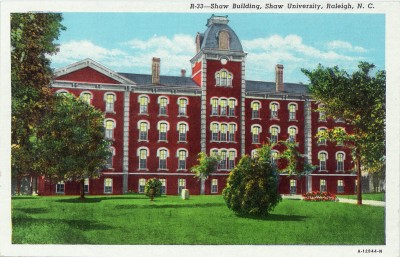
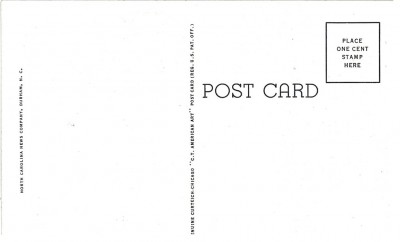
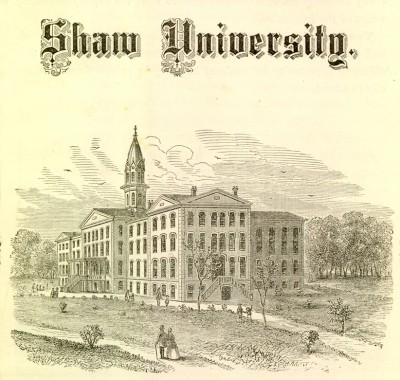
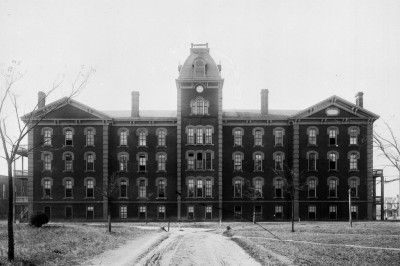
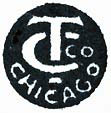
 Sign up for the Newsletter
Sign up for the Newsletter
02/26/2014
What happened to the grave of Henry Martin Tupper when the original Shaw Hall was destroyed?